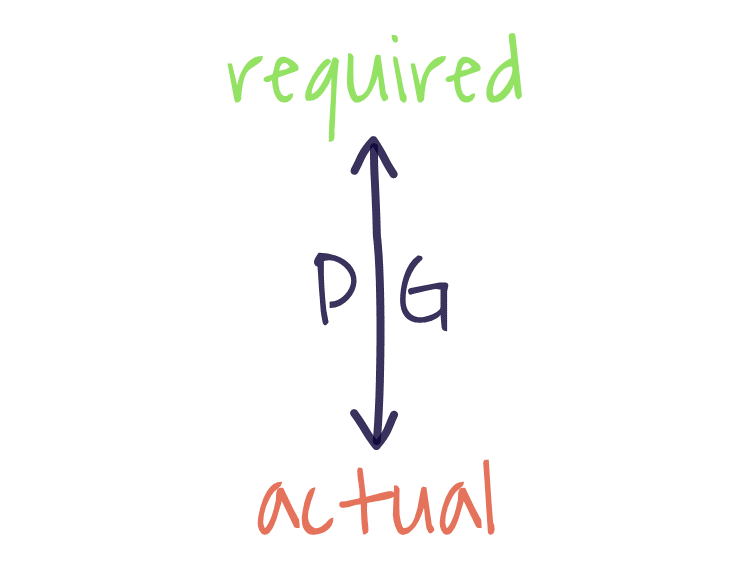
audio
The acronym PLUCKS stands for:
Provable
You must be able to provide proof or evidence that the performance is not as required. It cannot be based on any assumptions or the views of others. Put yourself in that situation. You would want evidence or proof or poor performance, wouldn’t you?
Legitimate
It must be clear that the performance issue you are addressing is valid – a part of that person’s job and agreed behaviours.
Usual
Occasional, one-off performance might be tolerated – everyone is human, has an off-day or makes mistakes. Far more concerning is performance that is becoming the norm – and if it isn’t addressed, it will become the norm, and the usual behaviour or performance from that individual.
Consistent
Are you treating everyone the same?
Consider this mini-case study. Suppose you are concerned about punctuality within the team. Everyone should be in by 9.30. It’s now 9.35 and three team members are not yet present. One arrives at 9.36; you let it go; the next arrives at 9.38; you are really irritated now, but say nothing. Then the last one arrives two minutes later – and you ask them to see you in your office, because of their lack of punctuality. Is this fair? Should you treat everyone who has been late the same?
Known
Anyone who is being assessed for their performance should know what the criteria for assessment are. I was once reprimanded for my (quite fashionable, I thought) jacket, trousers and shoes I was wearing one day. I had no idea there was a dress code, or that it seemed to depend on the particular style preferences of the boss… So if there are standards for performance, but they are not clearly known to everyone, then it is the manager’s job to make those standards clear.
Situation
This could be particularly important if there has been a change, a deterioration, in the individual’s behaviour or performance. What might be behind this, the reason for this? Quite possibly it could be a change in the individual’s situation or circumstance. For example, something might be happening at home, which has nothing to do with work, but is impacting on work. Make sure you give the individual the opportunity to let you know if there is any such circumstance. Clearly the individual has a right to privacy, and to keep matters outside of work private. But it’s important to let them know that if there were such extenuating circumstances you might be able to help, but that if you don’t know, you can’t….
First things first...
... are you SURE you have a case of poor performance?
Use PLUCKS to ensure you have met all 6 requirements...
Provable
You must be able to provide proof or evidence that the performance is not as required. It cannot be based on any assumptions or the views of others. Put yourself in that situation. You would want evidence or proof of poor performance, wouldn’t you?
Legitimate
It must be clear that the performance issue you are addressing is valid – a part of that person’s job and agreed behaviours.
Usual
Occasional, one-off poor performance might be tolerated – everyone is human, has an off-day or makes mistakes. Far more concerning is poor performance that is becoming the norm – and if it isn’t addressed, it will become the norm, and the usual behaviour or performance from that individual.
Consistent
Are you treating everyone the same?
Consider this mini-case study. Suppose you are concerned about punctuality within the team. Everyone should be in by 9.30. It’s now 9.35 and three team members are not yet present. One arrives at 9.36; you let it go; the next arrives at 9.38; you are really irritated now, but say nothing. Then the last one arrives two minutes later – and you ask them to see you in your office, because of their lack of punctuality. Is this fair? Should you treat everyone who has been late the same?
Known
Anyone who is being assessed for their performance should know what the criteria for assessment are. I was once reprimanded for my (quite fashionable, I thought) jacket, trousers and shoes I was wearing one day. I had no idea there was a dress code, or that it seemed to depend on the particular style preferences of the boss… So if there are standards for performance, but they are not clearly known to everyone, then it is the manager’s job to make those standards clear.
Situation
This could be particularly important if there has been a change, a deterioration, in the individual’s behaviour or performance. What might be behind this, the reason for this? Quite possibly it could be a change in the individual’s situation or circumstance. For example, something might be happening at home, which has nothing to do with work, but is impacting on work. Make sure you give the individual the opportunity to let you know if there is any such circumstance. Clearly the individual has a right to privacy, and to keep matters outside of work private. But it’s important to let them know that if there were such extenuating circumstances you might be able to help, but that if you don’t know, you can’t….
audio 1
Having checked that these key 6 factors are accounted for, the next step is to close the gap.
If there is poor performance, there will be a gap between what is required, and what is being delivered. So to get performance back on track, you will need to close that gap. So pause this audio to jot down your ideas on how to close this gap, then start the audio again….
There are two main ways you can close this gap. The obvious one, and the most likely, is to move actual performance closer to what is required.
But of course it is possible to move what is required closer to the actual. It could be that what is required is no longer achievable with the resources you now have, so the top line may have to be adjusted; there is absolutely no point in setting a requirement that simply cannot be met. And of course, you could do both: adjust the requirements slightly whilst still driving actual performance closer to these adjusted requirements.
video
If there is poor performance, there will be a gap between what is required, and what is being delivered. So to get performance back on track, you will need to close that gap. So pause this audio to jot down your ideas on how to close this gap, then start the audio again…. There are two main ways you can close this gap. The obvious one, and the most likely, is to move actual performance closer to what is required. But of course it is possible to move what is required closer to the actual. It could be that what is required is no longer achievable with the resources you now have, so the top line may have to be adjusted; there is absolutely no point in setting a requirement that simply cannot be met. And of course, you could do both: adjust the requirements slightly whilst still driving actual performance closer to these adjusted requirements.
So - how can you close the gap?

audio
The four factors that tend to be at the heart of poor performance are all deficiencies: a lack of resources; a lack of knowledge; a lack of skills; and a positive or willing attitude.: together we call the RKSA of poor performance. Looking at each in turn: resources could include budge or time, but also materials and equipment, or people. There are two types of knowledge deficiencies: what and why. The individual may not know what is required – the briefing has been patchy or even non-existent; or the purpose of the task may not be evident, leading to poor motivation. A lack of skill or skills speqks for itself; as does a poor attitude. So on or more of these four factors is likely to be the main reason for poor performance. But it is worth considering at this stage who is the poor performer? Often it looks as though the individual doing the task is the poor performer – but how can they perform well if they have inadequate resources, knowledge or skills? And if their attitude belongs solely to them, then it’s no surprise it is poor if there is a lack of resource, knowledge and skill to do the job… In reality surely it is the manager who is responsible for providing the resources and knowledge required, and for ensuring the individual has the appropriate skills and attitude to complete the job well. So, truthfully, who is the poor performer here?
So how do you prevent poor performance occurring in the first place? In simple terms, use the RKSA model in preparing any performance requirement – ie make sure all 4 are sufficiently present before you start the task. In other words, ask yourself these four questions:
- Do they have the right and sufficient resources to do the task?
- Do they know clearly enough what is required? Do they know why it’s required?
- Do they have the right skills, at the right level?
- How do they feel about doing the task? What’s their motivation like? Do they feel confident?
If the answer to any of the above is no, then they are heading for poor performance, and that will reflect back on you, for not getting the RKSA in place…
RKSA
... the four key factors responsible for poor performance...
resources

To do any job properly, the individual needs adequate and appropriate resources – such as:
money
equipment
materials
space
time
knowledge

To prevent poor performance, the individual has to know:
what ... a clear brief & understanding of what is required.
why .. is this task necessary / important?
skills

Clearly the individual needs to be able to do the task...
... and do it to the correct level or standard.
attitude

Finally, they need a positive attitude, motivation or commitment. Someone might have all the necessary resources, knowledge and skills...
...but not the right ATTITUDE





